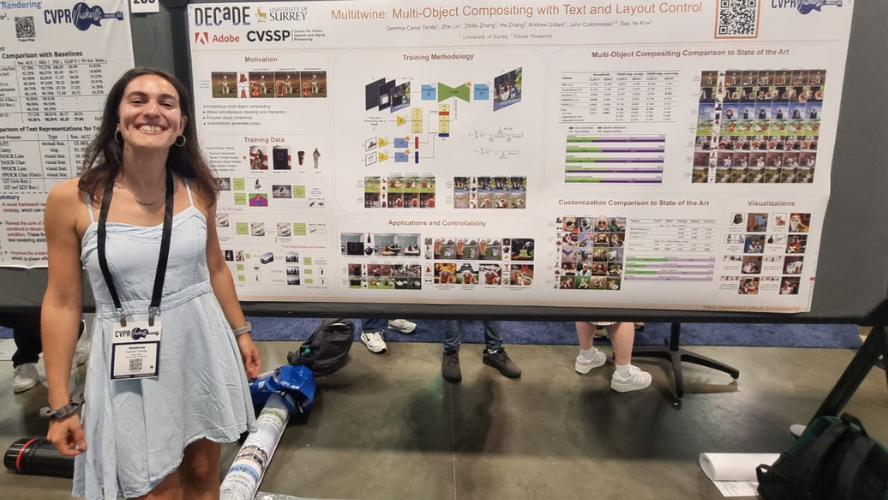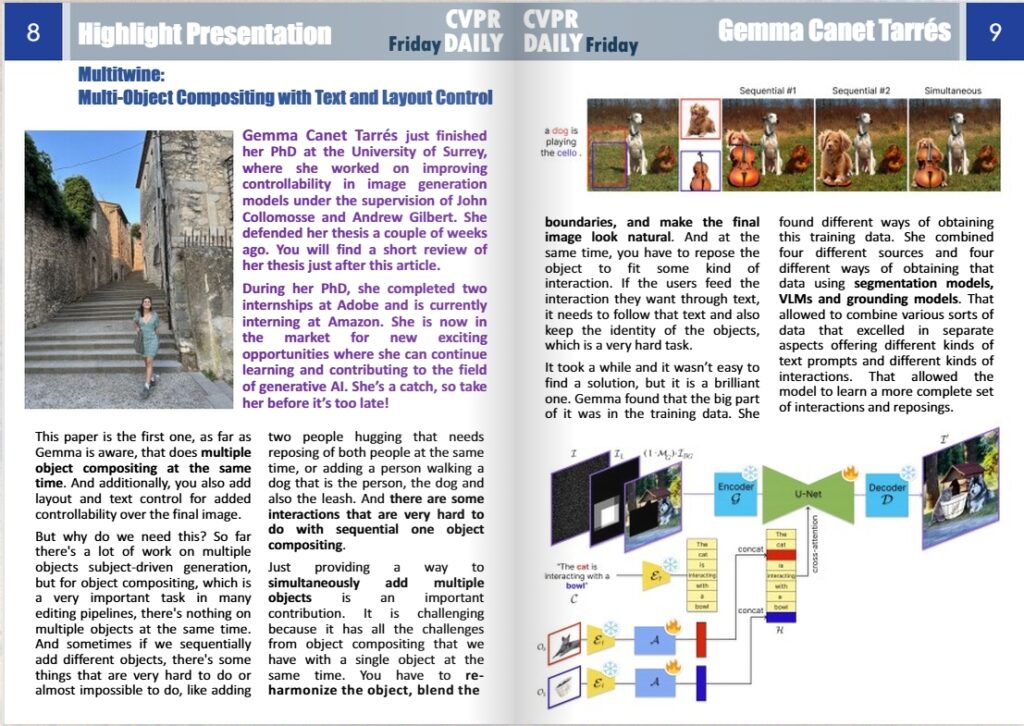In a remarkable accomplishment for a newly graduated scientist, DECaDE’s Dr Gemma Canet Tarrés’s research on image generation has been honoured at CVPR 2025, the premier Computer Vision and Pattern Recognition Conference.

Dr Canet Tarrés’ research was not only lauded as a highlight paper of the show, but also featured extensively in the conference’s daily newsletter. This is an outstanding achievement for Gemma, a member of our DECaDE research lab, who recently passed her viva with no corrections. This recognition provides excellent exposure for her research, which was conducted in collaboration with Adobe during her recent internship.
Her research paper ‘Multitwine: Multi-Object Compositing with Text and Layout Control’ – features the first generative model designed for simultaneously compositing multiple objects in a scene, guided by both text and layout. The model allows multiple objects to be added within a scene and captures a range of interactions from simple positional relations (e.g. ‘next to’), to complex actions requiring reposing. When no background image is provided, it can also act as a customization method, with performance comparable to the state of the art.
Dr Canet Tarres said: “I feel extremely grateful that people liked my work and found it relevant enough to be selected as a highlight at CVPR and even featured in the newsletter. I hope it can be useful, inspire others and, in one way or another, contribute to advancing the field of image generation.”

The Centre for the Decentralised Digital Economy (DECaDE) is a five-year EPSRC funded Next Stage Digital Economy Centre, part of the Centre for Vision, Speech and Signal Processing exploring how data-centric technologies, such as Distributed Ledger Technology (DLT) and artificial Intelligence (AI) could transform our future digital economy through decentralised platforms.

